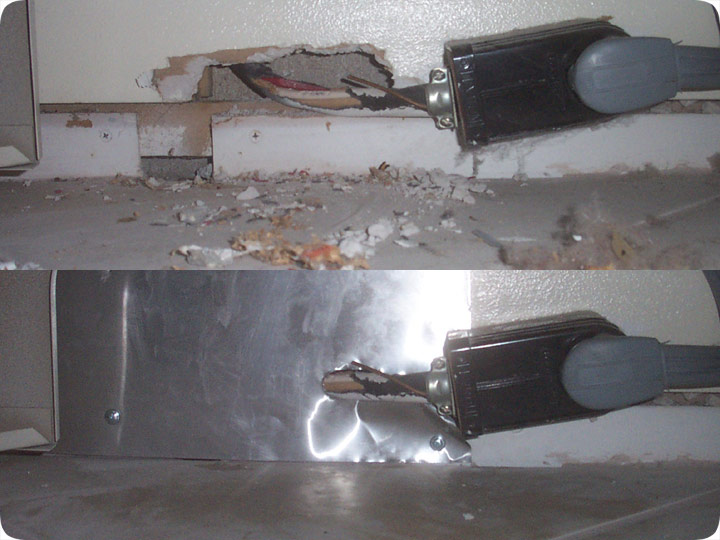-
info@aaanimalcontrol.com
Call us for help in your town
Humane Wildlife Education
Fix Hole to Keep Rats Out of House

I was called to a house which had rat activity inside the house. Rat droppings, pet food eaten, gnawing on food in the kitchen, and even gnawing on the carpet. I of course searched every last square inch for places that rats could use to enter the house, and as usual, the main spot was behind the stove. I remove the bottom drawer, and in the above photo, that's what I saw. Rats had chewed the drywall and the power cord. There were chew scraps and droppings under the stove. I cleaned it all up and sealed the area with sheet metal. I also sealed up the entire exterior of the house to prevent any rats from getting into any part of the home, attic included.
Remember, the most important step in a total wildlife control solution is to stop the source of the problem - if you have wild critters in your attic or home, the only way to permanently solve the problem is to close all the entry points! This is a special skill, and it requires extensive knowledge of both architecture and animal behavior. Being a skilled repairman also helps. All repairs should be done in such a way that keeps animals out for good - this often means sealing with steel, and sealing openings so that they are airtight, with no trace of airflow for animals to detect. Remember, rodents can gnaw through almost anything, and raccoons can tear through almost anything. While it's important to trap and remove animals, and clean up the waste they leave behind, the most important step in solving the critter problem and in keeping animals out forever is to identify and repair every last critter access point into the building. Without this crucial step, the job isn't complete.
Do it yourself: Visit my How To Get Rid of Rats page for tips and advice.
Get professional help: Visit my Nationwide Pro Directory of wildlife removal experts.
For more wildlife stories, click my Wildlife Blog or click my below banner to hire a local trapper.





















